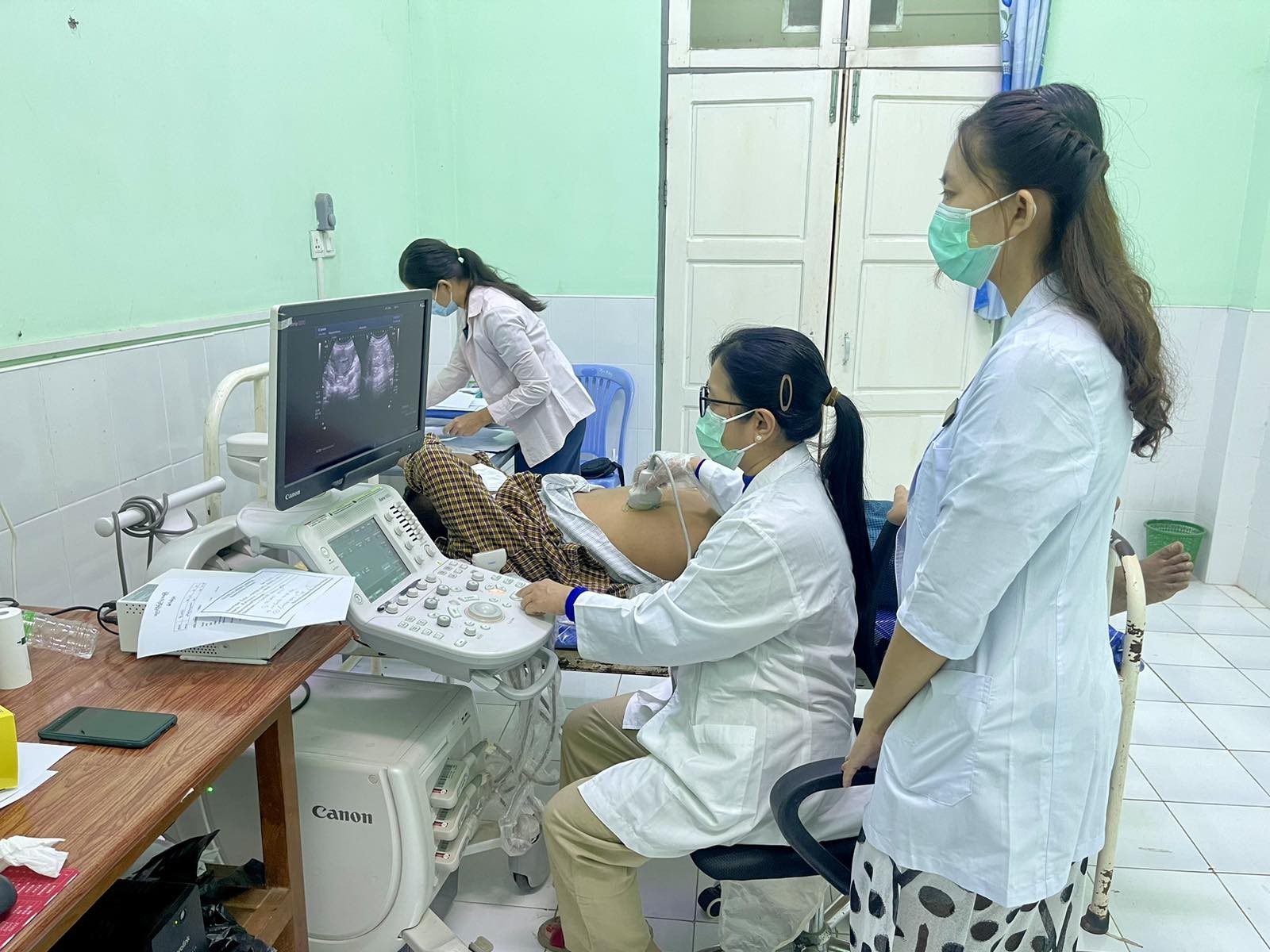By Saya Norm
Today, cancer is the second leading cause of death after cardiovascular Disease worldwide. It causes about 1 in every six deaths all over the world, more than AIDS, tuberculosis, and malaria combined. According to the statistics from WHO, approximately 20 million new cases of cancer were found in 2020 alone, and among them, nearly 10 million patients died. It is predicted there will be 28 million new cancer cases worldwide each year by 2040.
Many scientists say we are winning the war against cancer because of advanced technology. The morbidity and mortality rate of cancer seem to be declining in recent years, but new cases are increasing each year in real situations. Practising the wrong lifestyle and environmental pollution push cancer to move forward.
However, we can reduce the number of new cancer cases and deaths through proper food, exercise and lifestyle changes. Eating foods as medicines is more practical because a man can’t live without them. Most medicinal foods for cancer prevention and treatment are handy and affordable. Let’s see some of them.
Mushrooms
Mushrooms have been used in traditional medicines of East Asia due to their immunomodulatory, anti-cancer and anti-inflammatory activities.
The ancient Egyptians believed that eating mushrooms brought long life.
Modern scientists are likewise discovering that mushrooms have some fascinating medicinal properties. Among 14,000 different species of mushrooms, approximately 700 species have been reported to exhibit medicinal properties.
The bioactive compounds found in mushrooms include polysaccharides, proteins, fats, ash, glycosides, alkaloids, volatile oils, phenolics, flavonoids, carotenoids, enzymes, organic acids and some vitamins. The active compounds in mushrooms responsible for conferring anti-cancer potential are lectin, Lentian, krestin, hispolon, calcaelin, iludin-s, psilocybin and Helicium polysaccharide A, B(HPA and HPB).
Mushroom-specialized lectins recognize cancer cells and prevent these cells from growing and dividing. Lectins are notorious proteins which bind carbohydrates and have harmful consequences, but some of them, such as the ones in mushrooms, can be beneficial. Polysaccharides are the most potent mushroom compounds with anti-tumour and immunomodulating properties. According to the studies, eating one medium-sized fresh mushroom per day is less likely to develop breast cancer by 64 per cent. When it is combined with regular consumption of green tea, the result rocketed to an amazing 89 per cent.
One of the important polysaccharides, beta-glucan, stimulates the immune system as a non-self molecule by inducing the production of cytokines that activate phagocytes and leucocytes, which can destroy abnormal cell growth. Lentian had shown cytotoxic effects on cancer cells. A major anti-cancer compound in cordyceps species, cordycepin, exerts apoptosis (self-destruct) effect on cancer cells. Hispolon, an active phenol compound, has been reported to exert potent anti-neoplastic properties and enhance the cytotoxicity of chemotherapeutic agents.
Mushrooms are powerful to protest against breast and other hormone-related cancers because they inhibit the enzyme called aromatase, which produces estrogens. The important fact for mushrooms is that they shouldn’t be taken as raw. Cooked mushrooms are harmless. Most raw mushrooms contain agaritine, a natural toxin that has been found to be carcinogenic. This toxin is destroyed by heat, so as long as eating cooked mushrooms may prevent poisoning and further cancer outcomes. And you should avoid wild ones unless you’re absolutely certain they are edible and not poisonous. Gout patients should avoid mushrooms.
Cruciferous vegetables
Cruciferous means those vegetables have four-petal flowers thatresemble a crucifer ( a cross ). In this vegetable group, broccoli, Brussel sprout, arugula, cauliflower, kale, mustard green, turnips and collards are included. They could be some of the most potent nutritional superheroes on the planet.
Components in those vegetables can protect us from free radicals that damage our cell’s DNA and cause cancer. They might also help us eliminate cancer-causing chemicals. Studies have linked increased consumption of cruciferous vegetables with decreased rates of breast, lung, colorectal and prostate cancers.
The vegetables contain glucosinolates and an enzyme called myrosinase. Chopping, chewing or blending with other ingredients to cook breaks up the plant cells, allowing myosinase to come into contact with glucosinolates, initiating a chemical reaction that produces thiocyanates and isothiocyanates which are called Indole three carbinols (ITCs). ITCs have been shown to detoxify and remove carcinogens and to stimulate a process called apoptosis, in which cancer cells destroy themselves.
These compounds have higher anti-cancer properties and can inhibit cancer cell proliferation. ITC treatment stimulates the reactive oxygen species (ROS), cell cycle arrest, programmed cell death and autophagy. Human enteric microflora can also convert the unhydrolyzed glucosinolates into ITCs.
Cruciferous vegetables can be shredded, cleaned and eaten raw. They can also be broiled, steamed, and cooked. But high-temperature cooking can substantially reduce the activity of ITCs. So, taking them as raw or salads after soaking them in the boiled water for a few minutes is preferred.
Another option is taking them as vegetable juice using a juicer or Smoothies using a blender. Using them in Myanmar-style chickpea soup or Italian minestrone-style mixed vegetable soup is a good choice.
Celery
Celery contains mostly water, and it is rarely regarded as a nutritional powerhouse. But this crunchy food has been known for its health-giving properties since the 9th century, when it was used as medicine.
The crispy green stalks of celery contain two anti-cancer compounds, apigenin and luteolin, both of which are bioactive flavonoids that work as antioxidants and neutralize free radicals in the body.
Apigenin is effective at making apoptosis (natural cell suicide) in many cancer cells. Luteolin is effective at blocking the signal pathways necessary for the growth of cancer cells. When Lab mice suffering from man-made bone cancer were supplemented with luteolin in their diet, tumour development rate dropped nearly 50 per cent, and tumour progression also slowed.
And also in human studies performed in China showed eating just two medium-sized celery two or three times per week could reduce the risk of lung cancer by an amazing 60 per cent. Other studies have found celery to be potentially effective at ovarian, pancreatic, prostate, breast and liver cancers.
Beyond apigenin and luteolin, celery contains other plant compounds that have powerful antioxidant properties. They are selinene, Limonene, Kaempferol and p-coumaric acids. Celery is naturally rich in vitamins A, C, K, folate and minerals such as potassium. And it is rich in fibre, so celery can help prevent constipation.
Most Myanmars use celery as a spice vegetable in meat curries. For cancer patients, celery juice alone or in mixed vegetable smoothies can be used. Celery is suitable for most people but can trigger severe allergies, including hives, swelling and difficult breathing.
So, someone with cancer should taste a small sample to know whether it is allergic or not.
In conclusion, medicinal foods should be combined with conventional cancer treatments in advanced stages for better outcomes.
Different vegetables have different medicinal phytonutrients with different therapeutic properties, so eating varieties of vegetables in combination is preferred. A proper diet is a reliable and better way to prevent and treat cancer.

















